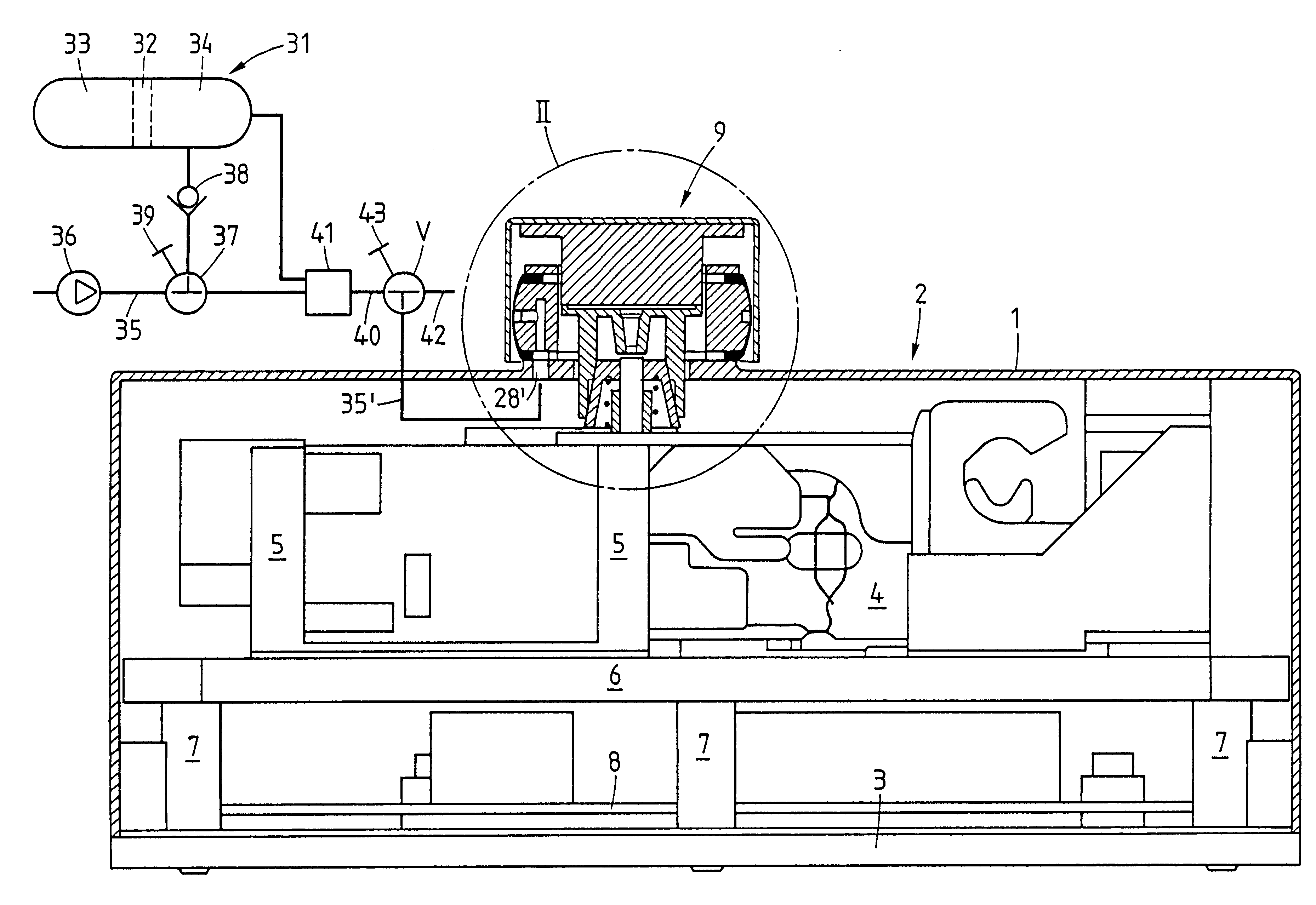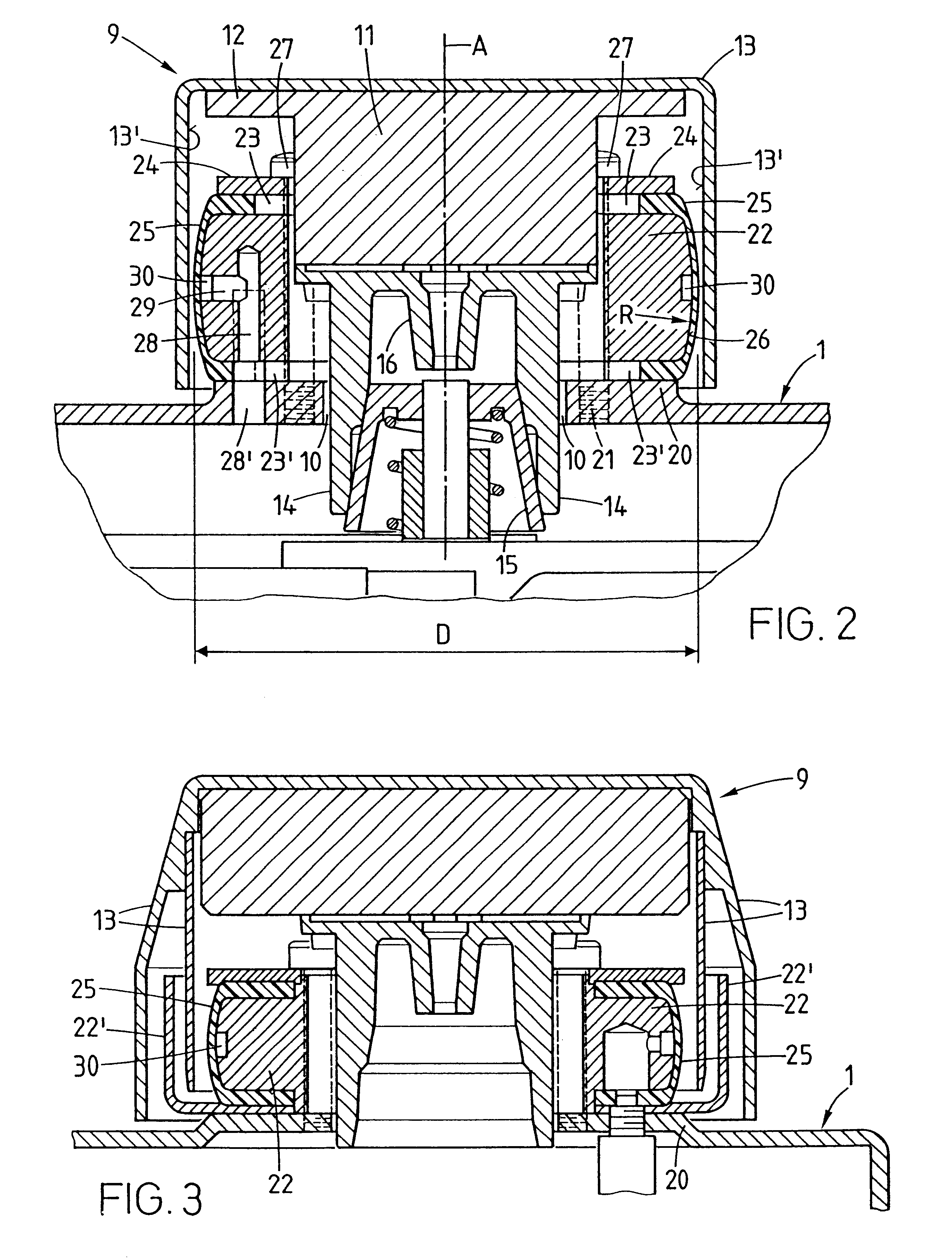Weighing scale with a combined sealing and arresting device
a technology of sealing and arresting device and weighing scale, which is applied in the direction of measuring device, weighing apparatus, instruments, etc., can solve the problems of accuracy degradation and achieve the effect of preserving the accuracy of the scal
- Summary
- Abstract
- Description
- Claims
- Application Information
AI Technical Summary
Benefits of technology
Problems solved by technology
Method used
Image
Examples
Embodiment Construction
FIG. 1 gives a schematic view of a scale 2, e.g., a conveyor-belt scale installed below a weighing section of a conveyor belt. The scale housing 1 is seated on a base 3. The scale housing 1 encloses a force transducer 4 of a design that is known per se, preferably of a type where a block containing the lever-reduction mechanism is mounted on a plate 6 by means of brackets 5. The plate 6, in turn, is supported from below on posts 7. The space below the plate 6 is occupied by the electronic circuitry required to perform the weighing process, for example a circuit board module 8.
A load-transmitting member 9, shown in an enlarged view in FIG. 2, protrudes like a large push-button on the topside of the scale housing. The load-transmitting member extends in the direction of an axis A and passes through a coaxial opening 10 of the scale housing 1 to transmit the force from the weighing load to the force transducer 4. Thus, FIG. 2 in particular illustrates that the load-transmitting member ...
PUM
 Login to View More
Login to View More Abstract
Description
Claims
Application Information
 Login to View More
Login to View More - R&D
- Intellectual Property
- Life Sciences
- Materials
- Tech Scout
- Unparalleled Data Quality
- Higher Quality Content
- 60% Fewer Hallucinations
Browse by: Latest US Patents, China's latest patents, Technical Efficacy Thesaurus, Application Domain, Technology Topic, Popular Technical Reports.
© 2025 PatSnap. All rights reserved.Legal|Privacy policy|Modern Slavery Act Transparency Statement|Sitemap|About US| Contact US: help@patsnap.com



